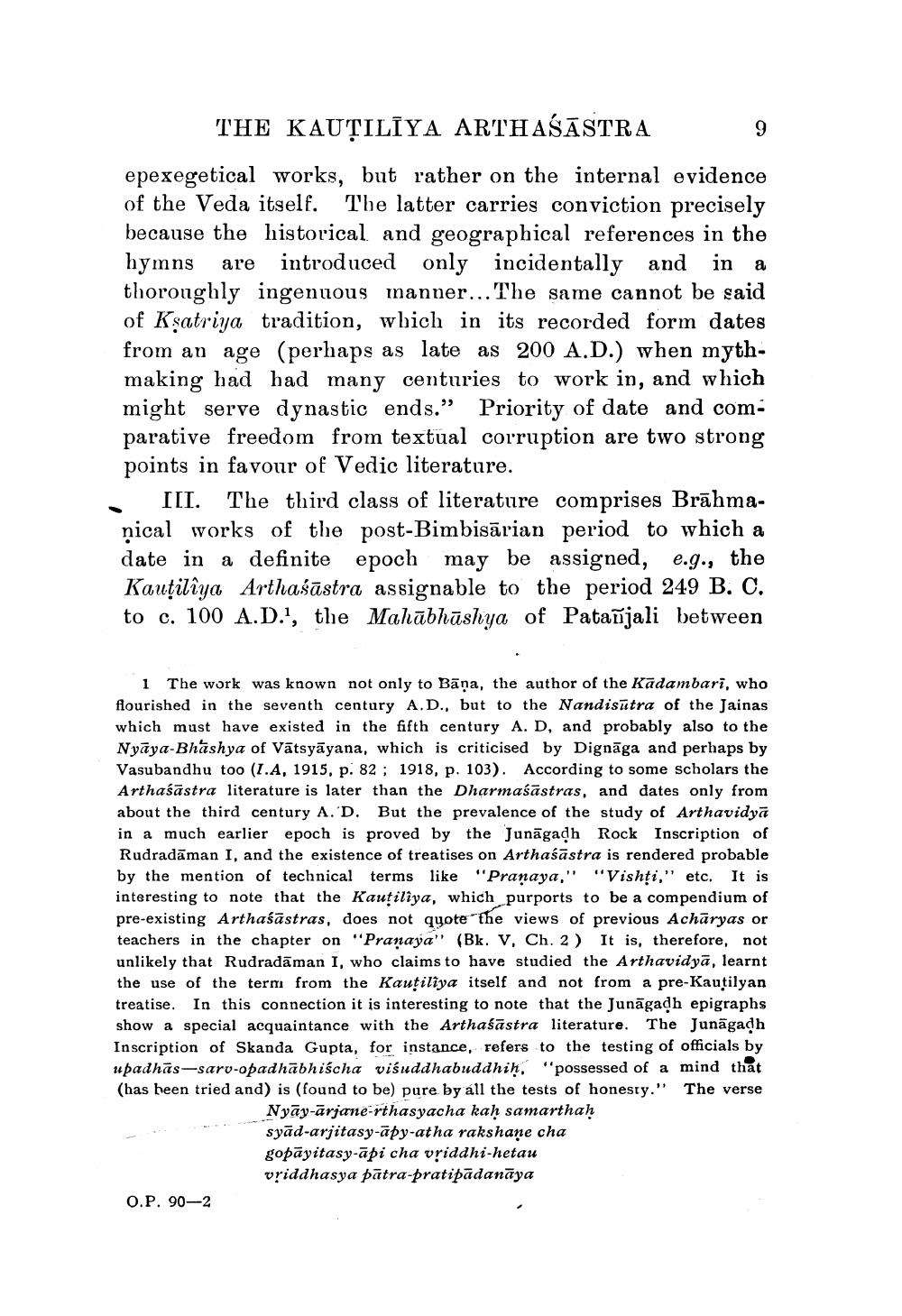________________
THE KAUTILĪYA ARTHASĀSTRA
epexegetical works, but rather on the internal evidence of the Veda itself. The latter carries conviction precisely because the historical and geographical references in the hymns are introduced only incidentally and in a thoroughly ingenuous manner... The same cannot be said of Ksatriya tradition, which in its recorded form dates from an age (perhaps as late as 200 A.D.) when mythmaking had had many centuries to work in, and which might serve dynastic ends." Priority of date and comparative freedom from textual corruption are two strong points in favour of Vedic literature.
III. The third class of literature comprises Brāhmaņical works of the post-Bimbisārian period to which a date in a definite epoch may be assigned, e.g., the Kautilîya Arthaśāstra assignable to the period 249 B. C. to c. 100 A.D.', the Mahābhūshya of Patañjali between
1 The work was known not only to Bāna, the author of the Kadambari, who flourished in the seventh century A.D., but to the Nandisutra of the Jainas which must have existed in the fifth century A. D, and probably also to the Nyāya-Bhashya of Vatsyāyana, which is criticised by Dignāga and perhaps by Vasubandhu too (1.A, 1915, p. 82 ; 1918, p. 103). According to some scholars the Arthaśāstra literature is later than the Dharmaśāstras, and dates only from about the third century A. D. But the prevalence of the study of Arthavidyā in a much earlier epoch is proved by the Junāgadh Rock Inscription of Rudradāman I, and the existence of treatises on Arthaśāstra is rendered probable by the mention of technical terms like "Pranaya," "Vishti," etc. It is interesting to note that the Kauţiliya, which purports to be a compendium of pre-existing Arthaśāstras, does not quote the views of previous Achāryas or teachers in the chapter on "Pranaya" (Bk. v. Ch. 2) It is, therefore, not unlikely that Rudradāman I, who claims to have studied the Arthavidyā, learnt the use of the term from the Kauţiliya itself and not from a pre-Kautilyan treatise. In this connection it is interesting to note that the Junāgadh epigraphs show a special acquaintance with the Arthaśāstra literature. The Junagadh Inscription of Skanda Gupta, for instance, refers to the testing of officials by upadhās-sarv-opadhābhiścha visuddhabuddhiḥ "possessed of a mind that (has heen tried and) is (found to be) pure by all the tests of honesty." The verse
Nyāy-ārjane-rthasyacha kah samarthah syād-arjitasy-āpy-atha rakshane cha gopāyitasy-api cha vriddhi-hetau
vriddhasya patra-pratipādanāya O.P. 90-2




